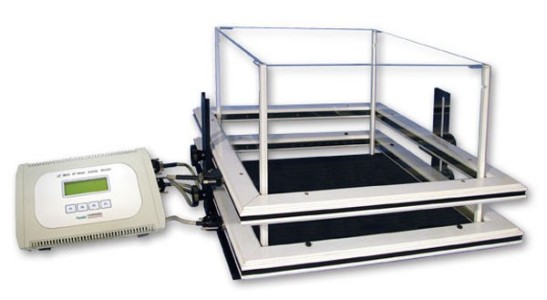Authors
R. Lalonde, C. Strazielle.
Lab
Centre Hospitalier de l’Université de Montréal/St-Luc, Unité de Recherche en Sciences Neurologiques, Montréal, Québec, Canada ; Université de Rouen, Faculté des Sciences, Mont-Saint-Aignan, France ; Université Henri Poincaré, Laboratoire de Pathologie Mol
Journal
Archives of Gerontology and Geriatrics
Abstract
Aged mice were compared to middle-aged mice in two tests of exploratory activity and two tests of motor coordination. The 16-month-old mice had more ambulatory and rearing movements than 24-month-old mice, but fewer sterotyped movements. In contrast, no difference was found in the emergence test. The 16-month-old group outperformed the 24-month-old group on the stationary beam and coat-hanger tests. Regression analyses indicate that the number of falls from the stationary beam was positively correlated with movement times (MTs) before reaching the end of the horizontal bar. However, there was no significant correlation between open-field measures and emergence latencies, indicating that the two tests of exploratory activity estimate separate aspects of behavior.
BIOSEB Instruments Used
Infrared Actimeter (LE8815)
Source :
http://www.sciencedirect.com/science/article/pii/S0167494308000897

 Douleur - Allodynie/Hyperalgésie Thermique
Douleur - Allodynie/Hyperalgésie Thermique Douleur - Spontanée - Déficit de Posture
Douleur - Spontanée - Déficit de Posture Douleur - Allodynie/Hyperalgésie Mécanique
Douleur - Allodynie/Hyperalgésie Mécanique Apprentissage/Mémoire - Attention - Addiction
Apprentissage/Mémoire - Attention - Addiction Physiologie & Recherche Respiratoire
Physiologie & Recherche Respiratoire




































 Douleur
Douleur Système Nerveux Central (SNC)
Système Nerveux Central (SNC)  Neurodégénérescence
Neurodégénérescence Système sensoriel
Système sensoriel Système moteur
Système moteur Troubles de l'humeur
Troubles de l'humeur Autres pathologies
Autres pathologies Système musculaire
Système musculaire Articulations
Articulations Métabolisme
Métabolisme Thématiques transversales
Thématiques transversales Congrès & Meetings
Congrès & Meetings 